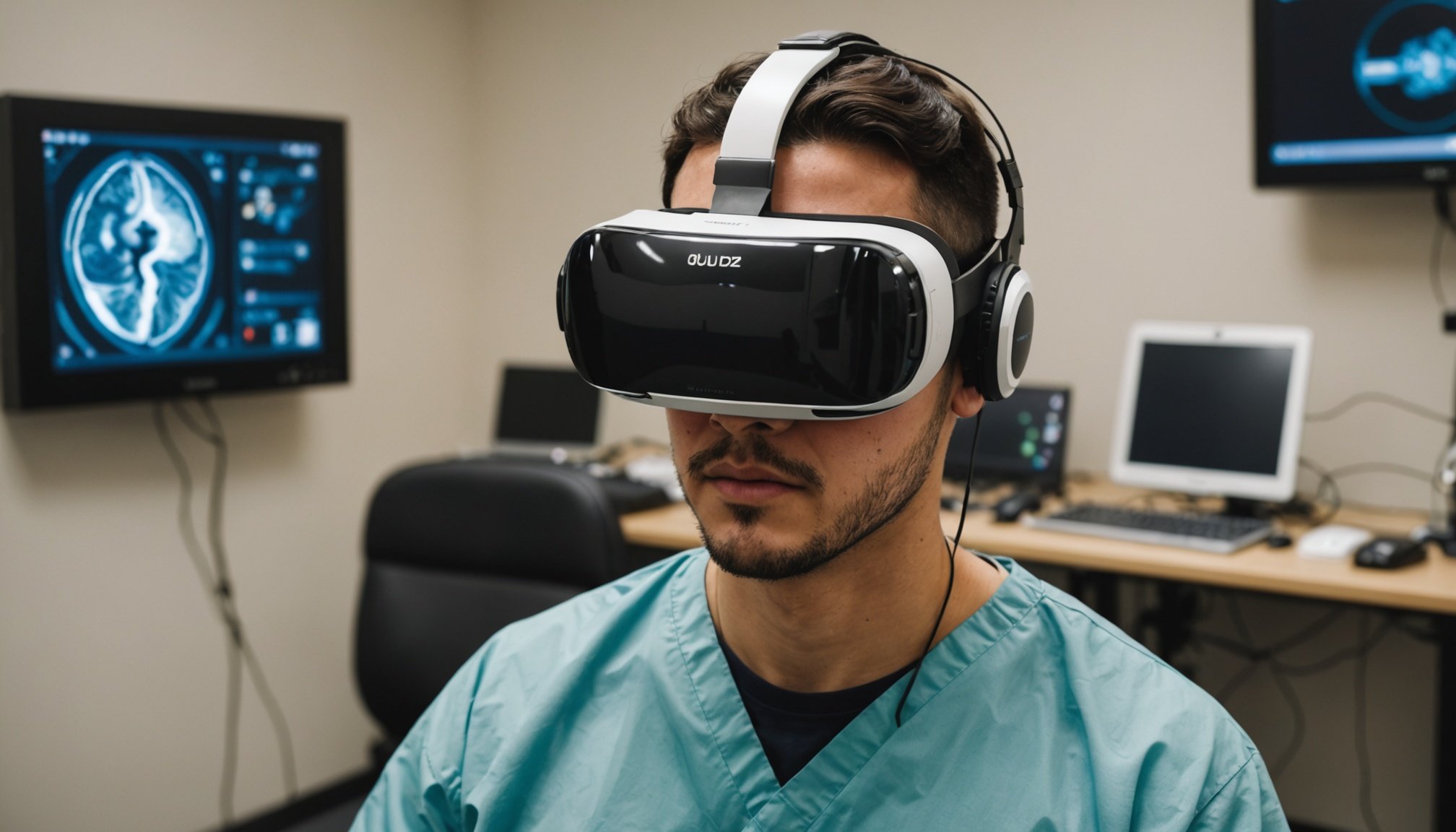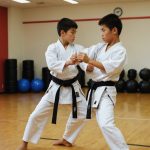Overview of Virtual Reality Technology in Medical Training
Virtual Reality (VR) has become a groundbreaking tool in medical training, transforming how medical professionals learn and practise critical skills. Initially, VR was a science fiction concept, but it has evolved into a practical tool that enhances technology in education. At its core, VR involves immersive, computer-generated environments that mimic real-world scenarios. This immersive experience allows medical trainees to engage with lifelike simulations without the risks associated with real patients.
Key technologies have advanced, with platforms like Oculus Rift and HTC Vive leading the charge in surgical training. These platforms offer lifelike representations, providing practitioners with hands-on experience. Such realistic interactions not only hone surgical techniques but also improve decision-making skills in real-time clinical settings.
In parallel : Exploring the Impact of Prolonged Antidepressant Use on Bone Density: What You Need to Know
The potential of VR in medical training is immense. By offering repeatable and controlled environments, VR ensures that learners can practise procedures multiple times until mastery is achieved. This method surpasses traditional training, which often relies on limited hands-on opportunities. As the technology continues to evolve, it is set to play an even more critical role in shaping the future of medical education, ensuring that professionals are better prepared for real-world challenges.
Effectiveness of VR Training in Surgical Skill Mastery
The effectiveness of VR training in enhancing surgical skills has been a subject of numerous studies. These studies consistently highlight how VR training often surpasses traditional teaching methods. For instance, in a comparison of learning outcomes, VR trainees showed a significant improvement in skill acquisition. This is primarily due to the immersive environment, which allows for repetitive practice without the risks associated with live patients.
In parallel : Exploring the Advantages of Group Therapy for Overcoming Social Anxiety Disorder
Statistical evidence robustly supports these findings. Research indicates that VR training can lead to a 30% increase in skill retention compared to conventional training techniques. Trainees demonstrate quicker and more precise decision-making attributed to the realistic simulations provided by VR. This hands-on experience translates to better preparedness in actual surgical environments.
Moreover, anecdotal evidence from case studies further underscores VR’s impact. Many students report increased confidence and competence as they transition from virtual to real-life surgeries. One such case involved a medical school implementing VR modules, resulting in a significant boost in surgical proficiency among its students. These insights collectively attest to the transformative potential of VR in surgical training.
Comparisons with Traditional Training Methods
When it comes to traditional medical training, limitations often hinder the progress of budding medical professionals. Availability of resources and exposure to diverse cases can be inadequate. Furthermore, the high pressure of hands-on experiences in real-life scenarios typically leaves little room for error or repetitive practice in a safe environment.
Limitations of Traditional Methods
Traditional instructional methods, though invaluable, come with several drawbacks. A major challenge is the limited number of patients and cases students can engage with due to logistical constraints. This restricts the variety of scenarios experienced during training. Furthermore, the learning curve in live environments is steep, where mistakes can have serious consequences, causing stress and anxiety among learners.
Advantages of Virtual Reality
Virtual Reality (VR) revolutionises traditional training through risk-free, immersive simulations. With VR, students can practise procedures countless times, increasing precision and confidence. This technology mimics real-world scenarios, allowing students to make and learn from their mistakes without endangerment, which enhances skill acquisition and application.
Bridging the Gap between Methods
Blending virtual and traditional methods results in a hybrid approach that leverages the strengths of both. By addressing specific shortcomings of hands-on training with VR’s immersive experiences, a comprehensive learning environment is crafted. This ensures thorough skill development, adaptability, and preparedness for real-world medical challenges.
Testimonials from Students and Educators
Virtual reality (VR) in medical education has revolutionised the landscape, providing invaluable training experiences to both students and educators. Medical students often express excitement and appreciation for the immersive learning environment. Many highlight that VR provides a realistic simulation of surgical procedures, enhancing their understanding and skills. One student mentioned how VR allowed for repeated practice without the anxiety of real-world consequences, improving both confidence and competence.
Meanwhile, educators provide insightful feedback on the efficacy of VR. They acknowledge the platform’s ability to deliver consistent and standardised training, essential for bridging gaps caused by varying clinical experiences. An educator noted, “Through VR, I’ve seen students grasp complex concepts more quickly and efficiently, thanks to the interactive and engaging nature of the tool.”
Institutions have shared numerous success stories, applauding VR’s impact on surgical training. A notable account involves a medical school that saw a dramatic improvement in exam pass rates post extensive VR training integration. These educator insights solidify VR’s growing role in medical training, promising a future where advanced technology and learning seamlessly intertwine.
Challenges and Limitations of Virtual Reality in Medical Education
Virtual reality is hailed as transformative in medical education, yet it’s not without its challenges. A key concern is the technical and logistical challenges of integrating VR into existing curricula. Many schools face difficulties updating facilities and training instructors on new technology. Initially, educators encounter compatibility issues with legacy systems, demanding significant time and financial investment.
Another crucial aspect is the limitations related to the financial implications. Acquiring and maintaining VR equipment is costly, placing pressure on budgets. Schools with already constrained resources may find these costs prohibitive.
Furthermore, accessibility in medical schools is unequal. Institutions in less privileged regions face greater hurdles in obtaining state-of-the-art VR setups. This disparity can widen gaps in educational quality.
The transition from VR to actual procedures presents potential psychological effects on students. Adapting from virtual environments, which lack the unpredictability of real-life situations, students might face heightened stress. They may struggle to apply learned skills under pressure.
Despite these challenges of VR training, its potential benefits make overcoming these hurdles worthwhile. Finding sustainable solutions to these issues is key to making VR a staple in medical education across the board.
Future Implications of VR Training in Medicine
The future of VR in medical training holds immense potential to transform education and practice in the medical field. With ongoing innovations, VR technology is expected to evolve significantly in surgical training, offering a more realistic, immersive experience. New features such as haptic feedback and advanced AI-driven simulations are anticipated, enabling precise skill acquisition and error reduction.
Furthermore, educational strategies are likely to incorporate these advancements, providing interactive and personalized learning experiences. This enhances the ability for trainees to practise complex procedures repeatedly in a risk-free setting.
One of the most promising aspects is the potential impact of VR on global medical education and training accessibility. By harnessing VR technology, medical training can transcend geographical and physical limitations, reaching under-resourced areas where traditional training methods may be unavailable or limited. Affordable VR systems and open-source platforms can democratise access, allowing medical students and professionals worldwide to benefit from cutting-edge training.
This technological evolution could bridge the educational divide, ensuring that high-quality, advanced training is accessible to all, regardless of location. This is a critical step towards global health equity and improving patient outcomes.











